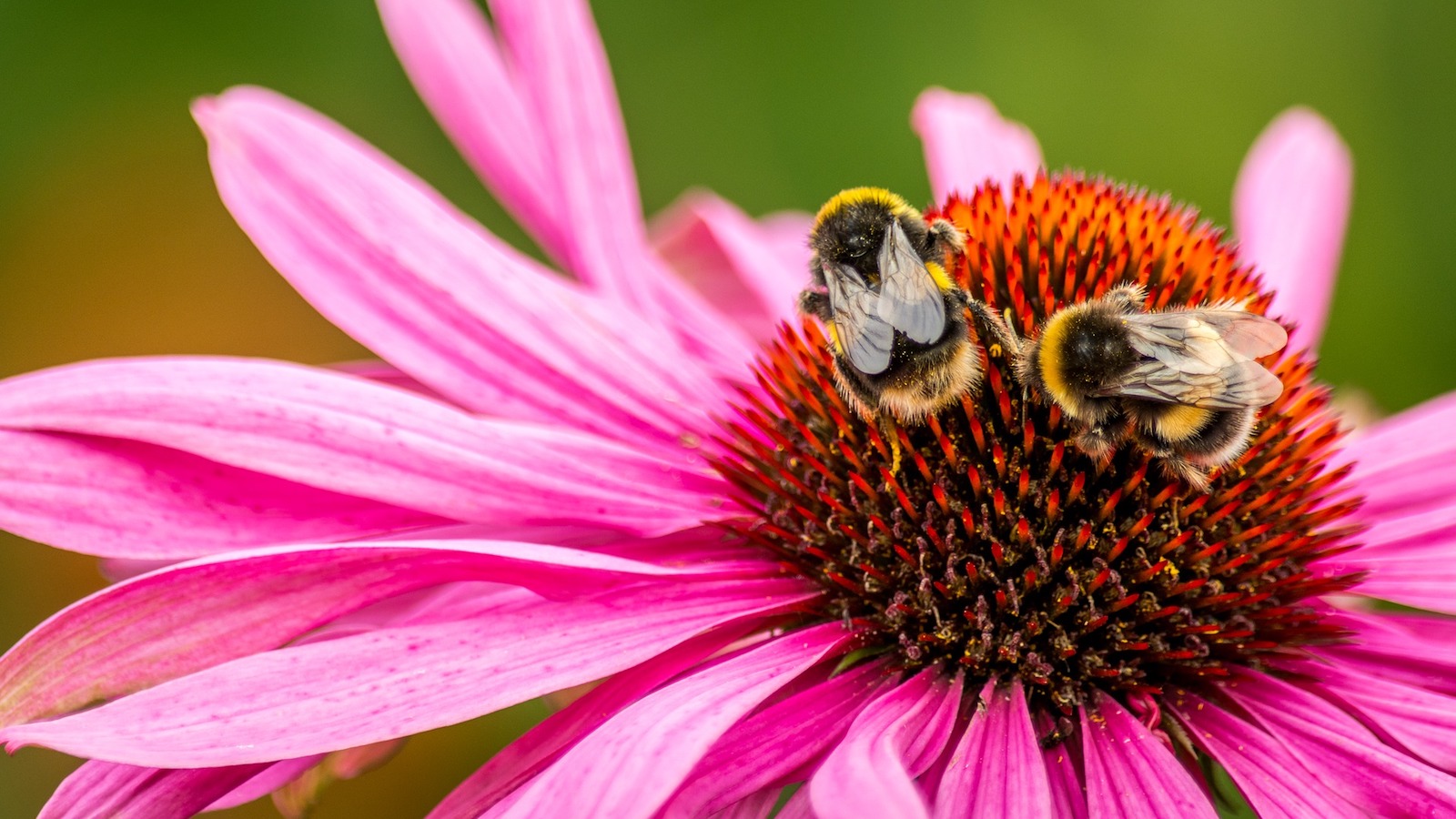
Tell Amazon to stop selling bee-killing pesticides
Birds migrate south. People plan tropical getaways. But what do bees do when cold winds sweep in and summer blossoms wither away?
Add your name
Some bees huddle in clusters — shivering to stay warm — while other bees hibernate on their own. Some of these pollinators simply don’t live long enough to experience winter at all.
As it turns out, that answer depends on the social life of each bee.
Like mason bees and carpenter bees, more than 75% of all bee species are solitary. These bees spend their entire lives on their own, building nests, laying eggs, and gathering nectar and pollen without the help of any other bee.
But winter is tough for those who go it alone. Some solitary bees pass the time in a hibernation state. They feast on pollen and nectar in the fall, then search for the perfect place to stay for the winter — dry leaves, rotting logs, old nests. Once they settle in for the winter, they reduce their metabolisms and survive off fat stores until spring. Other solitary bees don’t hibernate at all — instead, they simply have shorter lifespans and die within a year.
Some bees don’t fit neatly into either camp — instead, they alternate between social and solitary stages of life.
Bumblebees survive the winter on their own, digging little burrows underground to seclude themselves for a long, solitary hibernation. But as the weather warms and the sunshine beckons, these bees reemerge ready to socialize. They live in colonies of up to 200 of their fellow bumblebees during the warmer months until it’s time to hibernate once again.
Social bees live in large, cooperative communities headed by a queen. European honeybees are a classic social bee species — they live in colonies made up of a queen and up to 50,000 worker bees.
Honeybee colonies have a neat trick to survive the winter: thermoregulation. You or I might pull on a sweater when the temperature dips below 50 degrees, but honeybees cluster together in a ball and shiver to generate body heat. A honeybee ball can be 20 degrees warmer than outside — and they’ll stay huddled together like this throughout the winter, surviving off honey stored away in the hive.
Some social bees even make home improvements as temperatures drop. They can winterize their hives by sealing off cracks and crevices with a glue they make themselves — not unlike the draft stoppers and weatherstripping we might add to our own homes.
But no matter how they get through the winter, all bees face the same threats once they reemerge in the spring.
As green shoots poke up from the ground and buds appear on branches, bees will once again be faced with an old enemy: deadly pesticides.
With your support, we’re taking on the problems that are killing bees, including climate change, habitat loss, and the widespread use of bee-killing neonicotinoid pesticides.
We’re calling on Amazon and other corporations to stop selling neonics, urging our state government to plant more bee-friendly habitat, and providing the public with tips and guides on how they can make their gardens and yards a little safer for bees come spring.
Amazon can and should do its part to help save the bees. Add your name to our petition to Amazon's CEO.
Add your name
Steve directs Environment America’s efforts to protect our public lands and waters and the species that depend on them. He led our successful campaign to win full and permanent funding for our nation’s best conservation and recreation program, the Land and Water Conservation Fund. He previously oversaw U.S. PIRG’s public health campaigns. Steve lives in Sacramento, California, with his family, where he enjoys biking and exploring Northern California.
